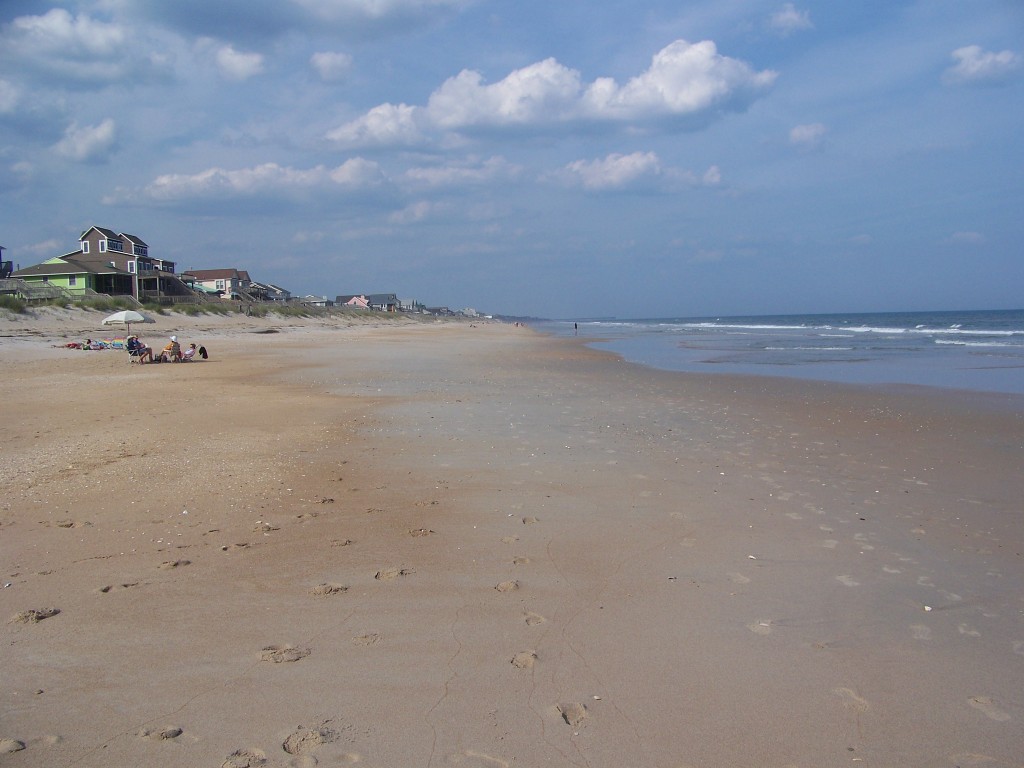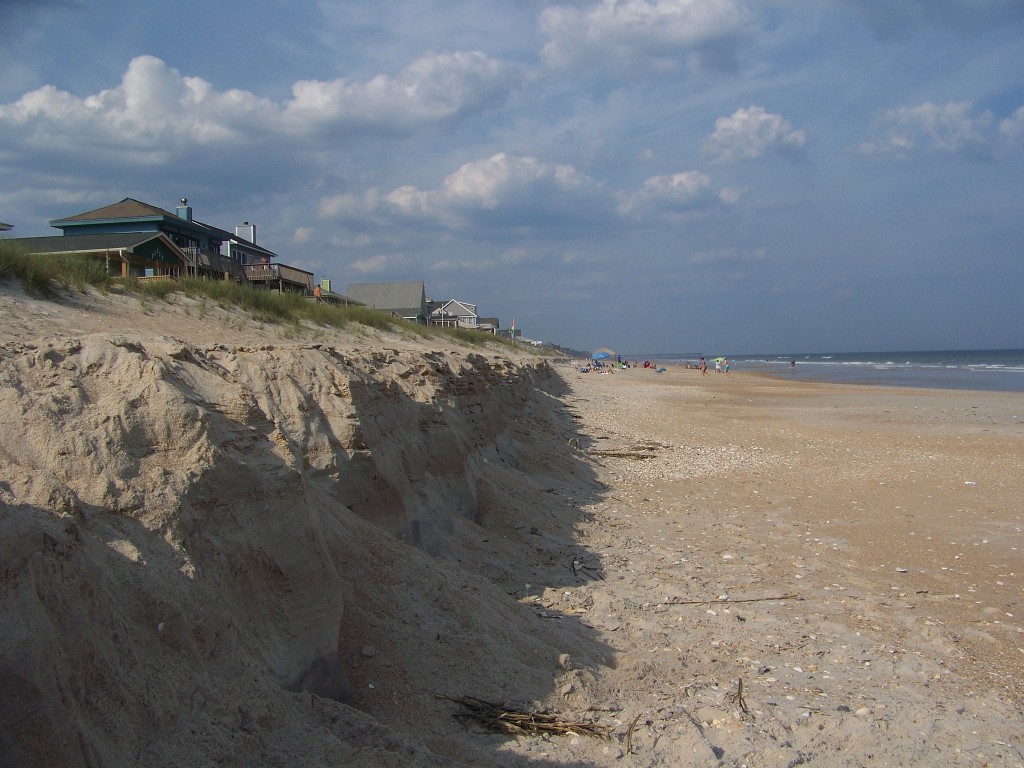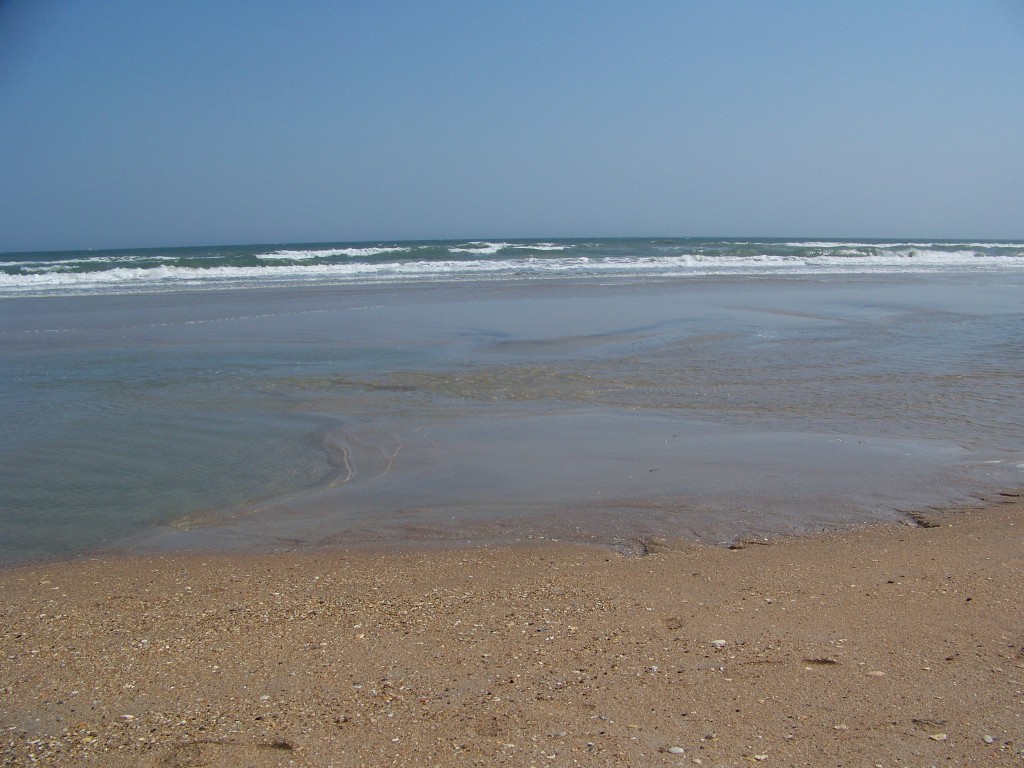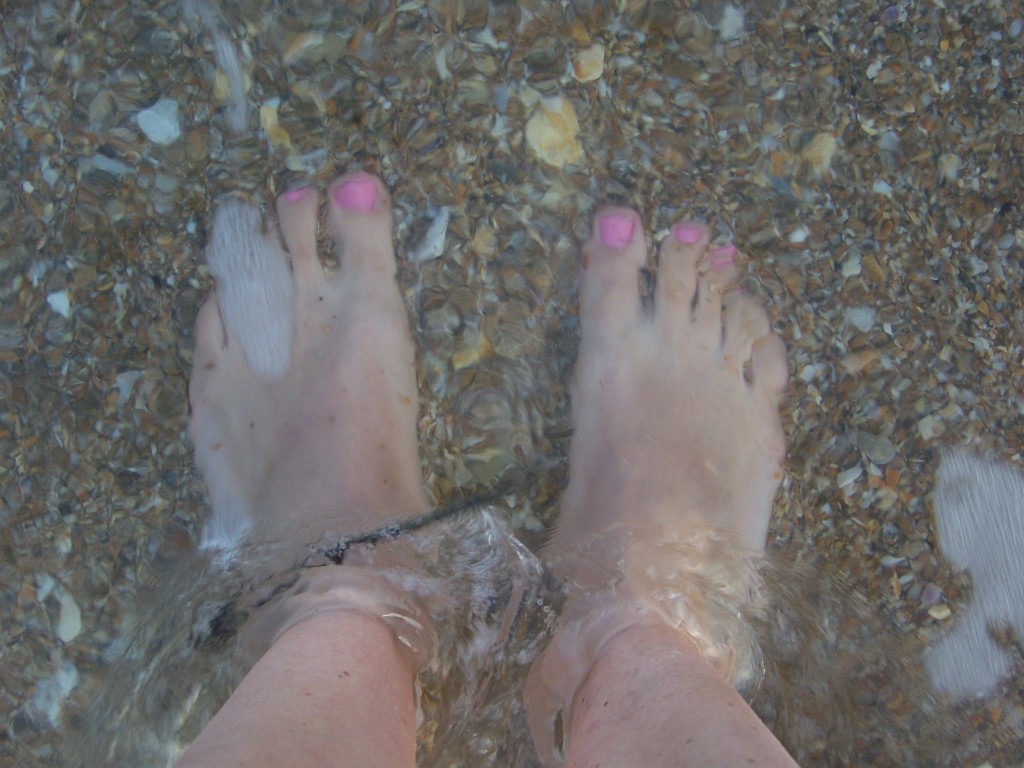Here’s an interesting thing I discovered after living on the island for a while. The beach changes.
For years, my husband and I took a beach vacation every spring, and I just assumed that the way the beach looked while I was there was, for the most part, the way it always looked. This is not the case, at least not on my island.
When I say the beach changes, I’m not referring to the tidal changes that off-islanders often think of when I first mention the changes. That’s a separate issue I’ll likely delve into on another post, one laced with humorous stories, incidentally. In this instance, I’m referring to the topographical changes, which sometimes occur over a period of days, but which can also occur quickly, over the course of a few hours in some cases.
 Some days, the sand is almost completely flat, only angling slightly and with perfect smoothness as it reaches toward the water.
Some days, the sand is almost completely flat, only angling slightly and with perfect smoothness as it reaches toward the water.
On other days, it’s a sharp slope, leading rather dramatically down to the ocean.
 Sometimes, the tides cut into the sand, leaving behind sharp ledges of sand almost reminiscent of the cliffs of the Grand Canyon. Except, thankfully, they’re not nearly so deep. That would be a parenting nightmare.
Sometimes, the tides cut into the sand, leaving behind sharp ledges of sand almost reminiscent of the cliffs of the Grand Canyon. Except, thankfully, they’re not nearly so deep. That would be a parenting nightmare.
 Of course, the sand under the water’s edge also changes, forming sand bars and tidal pools. As I mentioned in Pools of Water, the Island children love these. Actually, I love them, too.
Of course, the sand under the water’s edge also changes, forming sand bars and tidal pools. As I mentioned in Pools of Water, the Island children love these. Actually, I love them, too.
 Give me a beach chair and a good book, and I’ll be out there all day, toes buried in the water and the sand.
Give me a beach chair and a good book, and I’ll be out there all day, toes buried in the water and the sand.
How interesting! Our beaches are along bays/peninsulas, so they are mostly sheltered from open water of the Great Lakes. Due to that, the sand doesn’t change as dramatically. Now on the Great Lakes sides, the sand does change more like your island sand.
The Atlantic rarely gets as placid as what I’ve seen of the bay waters up by you. That tranquility must be wonderful juxtaposed with the background noise of four children!